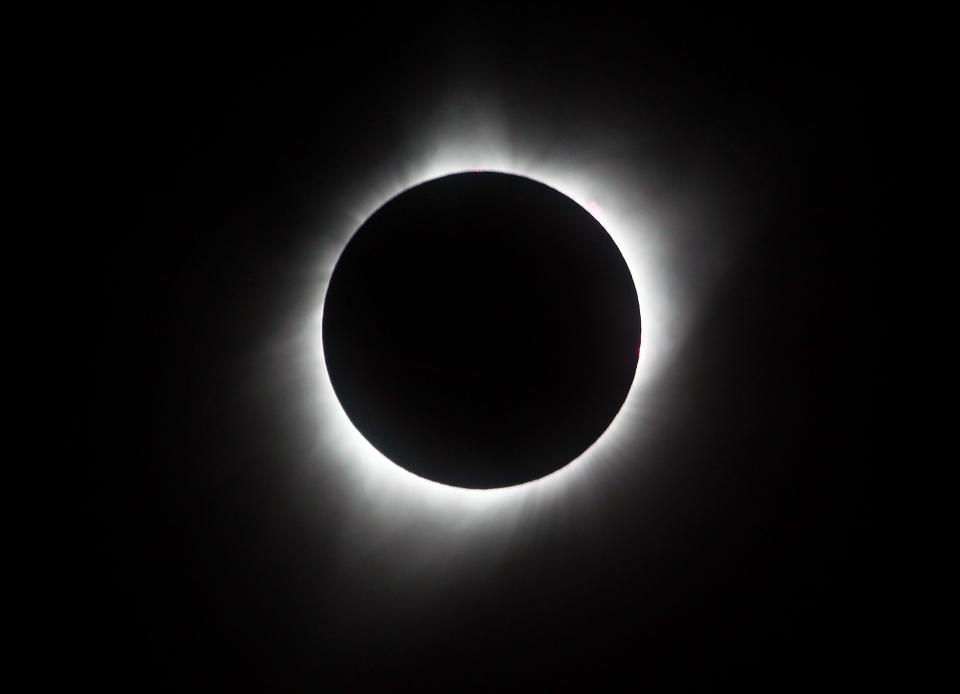How to photograph the 2024 solar eclipse: Do you need a solar filter for your camera lens?
Many Americans are hoping to capture photos of the upcoming total solar eclipse, as the phenomenon won't take place in the United States for another two decades.
But it's not as easy as pointing your camera at the sun and clicking a button.
Here's everything we know about what you need to photograph the solar eclipse, and whether you'll be able to capture the event with your cell phone.
What you need to take photos of the total solar eclipse

According to USA Today's photographers, here's what you need to take photos of the solar eclipse:
Solar glasses to protect your eyes from the sun during the partial phases of the eclipse.
Solar filter for your camera lens, shiny side facing the sun. If shooting with a DSLR or mirrorless camera you can order a filter sheet and tape it to the front of your lens. If you attempt to focus on the sun without a filter, you could damage your camera.
A sturdy tripod with an adjustable head. The heavier the tripod the better. An adjustable head will allow you to easily adjust the frame as the sun will move across the sky. A sandbag will help stabilize your tripod.
A telephoto lens that is at least 200mm-300mm. However, the sun will not fill the entire frame the at this length. The longer the lens the bigger the sun will appear in your images. You do not need to go out and purchase a new lens for the eclipse. You can rent a lens or crop your image later.
A remote shutter release or built-in timer will help eliminate camera shake. During totality you will not need your solar filter but your camera setting will change, slowing down your shutter. A release will allow you to fire your camera without touching it. This will result in a sharper image.
Extra batteries, memory cards, tape and anything else you need to be fully prepared for the day.
Why do I need a solar filter to photograph the solar eclipse?

Using a solar filter is imperative to protect both your device and your eyesight, Carly Stocks, a Utah-based photographer who captures images of the sky, told the Louisville Courier Journal.
Stocks recommends a solar filter that screws in front of a lens or taping one on your lens.
The filter must be kept on at all times during the viewing experience, except during totality when the sun's corona is visible.
"This is because the sun’s corona has a surface brightness a million times fainter than the sun’s visible disk or photosphere, so photographs of the corona must be made without a filter," according to Nikon USA.
Can I use eclipse glasses as a solar lens?
NASA advises against using eclipse glasses or handheld viewers with cameras. Instead they recommend using a special solar protector and to seek service from an astronomy or other expert before doing so.
Can you photograph the solar eclipse with a phone?
According to NASA, taking a photo of the eclipse "has more to do with the photographer than the camera."
Great photos can be taken during the eclipse with a DSLR camera or your cell phone, but the type of image captured will vary.
Without a telephoto zoom lens, you'll get better photos by focusing on landscape shots and the changing environment as the moon progressively covers more of the sun, NASA noted. With a cell phone camera, the sun will appear fairly small on the screen and there's only so far zooming in will get you.
Contributing: Anthony Robledo, USA Today; Leo Bertucci, Louisville Courier Journal
This article originally appeared on Oklahoman: How to take pictures of the 2024 solar eclipse with your phone or camera

